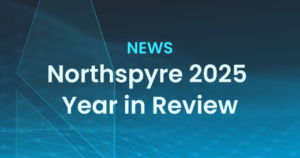Ground-up development, or projects built on raw land or by demolishing an existing structure to build on a scraped lot, continue to be a popular pursuit among both developers and investors heading into 2024. By looking at the real estate trends of the past couple of years, from innovative construction materials, sustainable style and architectural designs, and surges in key markets amid housing shortages, you can begin to predict where this asset class may be headed in the next year.
Investors have historically found ground-up developments appealing because the properties have the potential to deliver the highest returns of any asset class and offer market flexibility compared to investing in or redeveloping an existing property. However, ongoing market uncertainty in 2024 may complicate the funding process and pose new challenges for your team. Speculative projects, which tend to be high-risk in the best market conditions, could be a more difficult pitch amid ongoing economic turbulence, supply chain delays, and labor shortages.
Here’s everything you need to know about the state of ground-up developments heading into 2024, from innovative construction materials to the impact of an uncertain economic outlook:
Current Trends in Ground-Up Development
By looking at the trends in ground-up development that prevailed in 2023, you can gain a better understanding of where the asset class may be headed in the next year. From a shift toward sustainable materials in construction to an increase in the amount of housing built outside of metropolitan coastal cities, this is what ground-up development looked like over the last year.
Construction Material Innovations
Projects breaking ground in 2023 were able to take advantage of a variety of innovative construction materials on the market. Innovative construction materials suchh as bendable or self-healing concrete, carbon fiber, hydroceramics, or modular bamboo structures are making infrastructure more durable, efficient, and eco-friendly. Sustainable materials have, in particular, been an emphasis of construction efforts over the past few years as developers look to make buildings more climate-friendly and disaster-resistant. For example, recycled plastic is being used to bolster the strength of many building materials such as concrete, roofing tiles, and indoor insulation. Ground-up developers are finding that an initial investment in materials can often save money in the long run, as stronger buildings require less maintenance and are less likely to have major structural concerns, such as foundation cracking.
Popular Design and Architectural Styles in 2023
Building design trends for ground-up developments in 2023 reflected residential demand. Buildings with small units, mainly studios or convertible one-bedroom apartments, are on the rise as residents look for affordable options in emerging markets. Demand for luxury apartments, which are desirable in a market where mortgages remain out of grasp among certain demographics, also remains strong. Mixed-use developments, or properties blending residential, commercial, or office space, are also popular among new ground-up development projects.
Biophilic design concepts, where architectural and interior design incorporates natural ecosystems and elements into the built environment, have become popular among owners, architects, and planners. In the past, design concepts incorporating nature were considered a luxury investment, but the value-add of purified air, tranquil environments, and tie-ins with sustainable architecture components are making these eco-friendly spaces more common building additions.
Similarly, sustainable architecture that enables buildings to operate fossil-fuel-free or with net-zero emissions continue to rise in popularity. Popular examples of complex projects utilizing sustainable architecture include the Bullitt Center in Seattle, Washington one of the world’s greenest commercial buildings, the Phipps Center for Sustainable Landscapes in Pittsburgh, Philadelphia, and Boston University’s fossil-fuel-free Center for Computer and Data Sciences.
Looking toward the future, sustainable, energy-efficient, and zero-waste buildings are likely to become the norm among new ground-up development projects.
Geographic Regions Experiencing a Surge in Ground-Up Development
Census data showed that population growth in nearly all metropolitan areas between 2010 and 2020, signifying growth in nearly all major cities across the United States. Multifamily development trends show an increase in which developers are opting to build more away from urban centers, focusing on small cities and suburbs. In general, these regions are more likely to have raw land and can present ideal project locations for those willing to track urbanization and migration trends. For example, Sun Belt cities in states such as Phoenix, Dallas, and Raleigh, North Carolina, are all markets on the rise.
Smaller cities and suburban areas are not the only markets with opportunities for ground-up development. Colorado, and in particular the Denver region, experienced an influx of residents as many tech workers with flexible arrangements opted to move away from coastal cities. As a result, the state is seeing more projects break ground, including several skyline-defining ground-up development projects in Denver, aiming to meet the growing population’s housing needs. Boston has been a hub for ground-up development related to the biotech and life sciences sectors, though the industry has cooled off slightly due to market saturation and economic uncertainty. By conducting appropriate market research, your team can identify ground-up opportunities, even in a competitive landscape.
Economic Impacts Influencing Ground-Up Development
Ground-up construction can often secure financing from banks more easily than the refurbishment of Class B or Class C buildings. A new development has a faster “recapture period” because once construction is complete, you can get a loan in order to capture all its equity. The property will also be a brand-new asset, meaning it will ultimately appraise higher than a Class C or Class B property.
Investors will likely need to see pro forma and design plans, as well as projections of future return on investment (ROI), before committing to a ground-up development project. The ability to demonstrate a track record of successful projects will prove particularly useful in an uncertain economy where investors are being more cautious and looking to mitigate risk. Modern real estate development software can help you leverage historical data from your past successful projects to bolster your reputation with investors. Demonstrating a track record of successful deals and high returns can help get your ground-up development projects off the ground in what may be a slower year overall.
Economic uncertainty is making the outlook for ground-up development more complicated, especially for multifamily projects. You can offset these financing challenges by doing thorough due diligence and targeting markets and housing types that are in high demand. Market research will prove more important than ever while preparing to pursue a project of this scale. Keeping an eye on where trends might be headed in 2024, such as new opportunities posed by regulations and zoning policy, can be a valuable way to offset the risks.
Predictions for 2024 and Beyond
Expected Changes in Regulations and Zoning
In order to address housing shortages, many cities and states are passing new zoning and regulatory policies to try and spur more production. Key markets may present new opportunities for ground-up development as a result, even in populous metropolitan areas.
Opportunities for developers looking to build large, multifamily residential projects will increase in key markets in 2024 amid these zoning changes. Funding projects may still present difficulties, but aggressive efforts to cut red tape will open the door to both redevelopment and ground-up development projects on the regulatory level in the next year and beyond.
Technological Advancements to Watch
Digital transformation will continue to help development teams reimagine their process for ground-up development projects in 2024. Leveraging a real estate development platform can help you mitigate risk and ensure positive outcomes on ground-up development projects through predictive cost analytics, automation, and machine learning. Northspyre’s platform allows your team to utilize your portfolio’s historical data in the early project planning stage, helping you forecast budgets more accurately and bring projects to market faster. Real-time alerts inform your team when there is a budget-line overrun or contract overspend, allowing you to adjust your budget and planning. For a speculative, ground-up development project, it’s more vital than ever to use technology to keep budgets on track and projects delivered on time.
Heading into 2024, it’s more important than ever to understand the opportunities and risks that ground-up development projects can present for your team. Zoning changes designed to boost housing production and increased demand for sustainably designed buildings may give ground-up development projects continued appeal, even amid economic uncertainty. Even so, the market outlook is almost certain to pose challenges over the life cycle of your project, and you should take every opportunity to boost efficiency and mitigate risk.
Download our guide to Overcoming Real Estate Development’s Greatest Obstacles to learn how you can avoid common pitfalls on all your upcoming projects.



